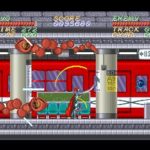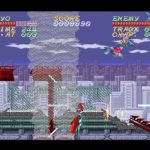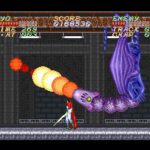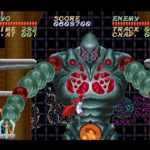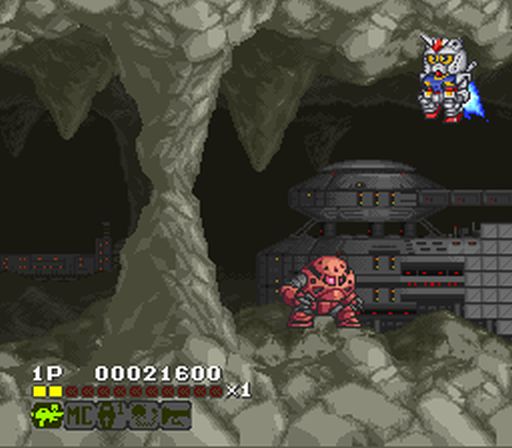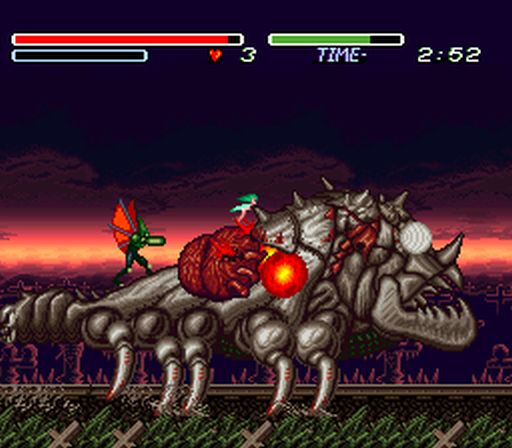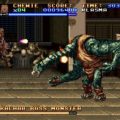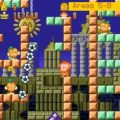Developer: Riot Publisher: Riot Release: 12/11/92 Genre: Action
I remember being severely disappointed when Renovation cancelled all of their American Super Nintendo games. I wasn’t aware of the reason why (Sega) but I was looking forward to all of their titles for a variety of reasons. The Journey Home, Arcus Spirits, and Psycho Dream were all complete, with some seeing reviews in numerous publications. Psycho Dream was set to be released under the title Dream Probe and looked really cool in Gamepro. It would be many years before I finally played It and remained just as interesting after all that time.
Unlike most platformers Psycho Dream has an elaborate back story. Sayaka Kaori is a girl that has fallen into a coma. However she can be reached by peering into her dreams using a machine. The National Public Safety Commission has a special division named the Diamond Dogs who enter people’s dreams to save their lives. To save Sayaka they send two of their best operatives, Ryo and Maria.
The story is not expanded on during the game but it does serve to explain all of the weirdness throughout the adventure. Since you are exploring Sayaka’s subconscious anything goes. There is a surreal element to the game as it mixes modern day settings with dream like demons. Both protagonists are also affected which also explains their various powers.
Each character has their own distinct quirks that make their gameplay unique. Maria has a Belmont style whip that allows her to attack from a distance. As her attack power increases the whip becomes powerful claws. In her ultimate form she dons a pair of wings that can slow her falling speed. Ryo is a cyborg in the dream world and as you gain more power his human façade fades away. The sword has medium range powers up in to a sickle that attacks in a wide circle.
Your weapons upgrade by collecting crystals. Yellow focuses on melee attacks while blue equips a laser gun. I found the laser to be ineffectual. The attack is small and weak. Maria’s laser at full power will track enemies but it is still too slow. At level 3 bright red crystals appear. These upgrade you to your ultimate form and the results are dramatic. Ryo unleashes a slew of lasers in every direction while Maria grows wings. Holding onto it is a struggle as three hits brings you back to your base form. This is particularly devastating during boss battles. Crystals also come in red and purple, which restore health and give another use of your smart bomb attack.
Considering its publisher It should come as no surprise that Psycho Dream is very similar to Valis. Both games feature an equal mix of action and platforming. The initial stages here feature very little platforming to acclimate you to the power-up system. It is in the back half that it becomes more daring. As much as I like the approach the first half is very boring as you fight the least threatening collection of enemies. As you delve deeper into Sayaka’s mind it becomes more interesting and I wish the entire game were that inspired. It is also pretty short at six stages and the lacking challenge makes it feel shorter.
I found Psycho Dream to be very easy overall. Your life bar is generous and with respawning enemies you can refill health pretty easily. The time limit pressures you into staying on the move but is so generous you can ignore it. It also resets with every new screen. You have infinite continues and while it is annoying to restart a given level from the beginning each stage is of medium length. The only challenge comes from the boss battles. Their patterns can be tricky and if you are depowered at any point can be next to impossible. It never reaches the point of frustration however. I think a reasonably skilled gamer will breeze through the game in less than an hour however.
Psycho Dream uses its dream setting to create some striking environments. The modern day meets demon setting is reminiscent of Shin Megami Tensei without coming across derivative. The game’s first half is bit dull as you venture through a generic city, subway, and an office building. The second half is where it becomes surreal. The creature design is original and the bosses are all large monstrosities that take up half of the screen. Special effects are at a minimum as the game relies heavily on transparency. The weakest element would be the soundtrack as the music is largely forgettable. For a game as dreamlike as this I think an ambient score would have fit better.
In Closing
Psycho Dream is a solid title overall. With a little more content and a bump in difficulty it could have been really special but is still fun regardless. This is a good import that requires no Japanese knowledge to enjoy. I say go for it.


